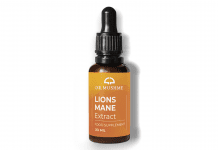
Ashley Elsner, CEO of artery Inc., weighs in on the effectiveness of the proposed legislation for spurring US financial institutions to serve cannabis companies in the industry.
While my hopes are high that financial institutions will shift their policies towards the cannabis industry, my expectation is that the SAFE Banking Act of 2019 (SAFE Banking) will have minimal impact. While SAFE Banking encourages financial institutions to support cannabis companies in the industry, it does not in any way reduce the costs of doing so, nor does it negate the other risk considerations that smaller financial institutions face in supporting the cannabis industry.
Did you know that artery Inc. is a partner of Health Europa? Discover more about them here.
The ‘high risk’ challenge
Banks created a categorisation for industries that require higher levels of anti-money laundering surveillance termed ‘high risk.’ The idea is that these industries require a higher level of government transparency because the nature of the industry makes using it to money launder easy. Any industry that operates primarily in cash will be labelled ‘high risk’ because operating in cash makes it very easy to tamper with financial records, since there are no third-party records to confirm the internal receipts and contracts.
Third party records typically come from banks and payment providers. So, if banks and payment providers refuse service to an industry, those industries are forced to stay in cash and therefore remain ‘high risk.’ While the logic of ‘high risk’ is circular, the impact is real. Industries that operate entirely in cash do have a higher risk of money laundering due to the lack of verifiable, trustworthy records.
Further, once the banking industry has labelled an industry ‘high risk,’ it’s virtually impossible to get rid of that label. The ‘high risk’ list of industries does not get updated but does provide a legitimate basis for banks to refuse service. Even restaurants still carry a ‘high risk’ label because of historical examples of the mafia’s money laundering through them even though the majority of us would not think the average restaurant poses any threat. As you can see, congressional action cannot change the ‘high risk’ categorisation, nor can it force banks to serve industries that they have decided not to serve.
Tackling Anti Money Laundering compliance
From the bank’s perspective, compliance costs are much higher for ‘high risk’ industries. Initial diligence done on a business is called Know Your Customer (KYC) compliance and KYC is a requirement for all financial accounts. Through a high degree of information sharing within the financial industry, KYC has become pretty streamlined. However, ‘high risk’ industries have fewer financial records to share making it harder to carry out due diligence on the businesses and their owners through the streamlined system – therefore it must be done by hand. For the cannabis industry in the US, ‘enhanced KYC’ has been mandated making it even more labour intensive for financial institutions wanting to serve the industry.
After KYC compliance, ongoing Anti Money Laundering (AML) compliance also needs to be carried out. AML requires transaction monitoring for any unusual behaviour. Without transaction data from the financial industry to determine what behaviour is unusual, AML becomes very complicated and requires a high level of training to do correctly for ‘high risk’ industries.
AML investigators with ‘high risk’ expertise are expensive and so you want to use their time judiciously. In 2014, the Financial Crimes Enforcement Network of the US Department of the Treasury issued guidance for banking within the cannabis industry. That guidance requires financial institutions to report all transactions in the cannabis industry on Suspicious Activity Reports. It requires that they determine and categorise which transactions are suspect, investigate the suspect transactions, and report their investigation findings to FinCEN. Other industries do not carry this level of burden for AML compliance.
Also, as part of AML compliance, financial institutions are required to verify the source of funds for transactions. (The international banking community calls this ‘determining the provenance of funds.)’ Deposited assets must be traced back to their source making sure that every transfer of the money was legitimate and came from legal businesses.
Again, financial institutions have streamlined a lot of this through information sharing within the industry. However, tracing cash capital back to its origin is labour intensive and requires auditing either through an independent auditor or by the financial institution working with the business. Therefore, the legacy cash and continued use of cash in the cannabis industry add even more complexity and expense to financial institution compliance.
In addition to the substantial added compliance costs, financial institutions wanting to serve the cannabis industry also risk their access to US transaction systems used to transfer capital, including ACH, credit and debit networks, and FedWIRE. The financial institutions with the strongest economic interests in working with the cannabis industry are smaller institutions that would like to increase their deposit levels. Smaller financial institutions licence their access to US transaction systems from federally chartered megabanks, which own all the above transaction systems.
In the licensing agreements, there are terms allowing these non-governmental corporations to revoke access to the US transactions systems for using them to support prohibited industries. In essence, by supporting cannabis using traditional transaction systems, these smaller institutions risk losing access to the entire US banking system.
artery’s solution addresses Anti Money Laundering compliance
As a result of the above problems faced by financial institutions to serve the cannabis industry, we created artery. artery’s transaction system automates AML compliance reporting from the transaction system. This unification of the transaction and compliance systems lowers the cost to serve ‘high risk’ industries, like cannabis, and virtually eliminates data transfer errors in compliance reports. Therefore, financial institutions using artery’s system will reduce their compliance costs and need to dedicate fewer resources to work with the cannabis industry.
Additionally, utilising blockchain allows artery to capture complete transfer records for all capital, automatically verifying the source of funds for transactions conducted on our system. Because those records are unable to be manipulated, the ability to anonymously money launder on our system is virtually eliminated. Therefore, cannabis companies using artery’s system have auditable, trustworthy records providing the necessary transparency for banking and regulating them.
Finally, because artery is an independent transaction system, small institutions can use artery to support emerging industries without fear of losing access to the rest of the US banking system. artery’s system access rules are designed to support emerging industries while restricting money laundering.
Ashley Elsner
CEO
artery Inc.
+1 404 326 6779
ashley@arterypay.com
www.arterypay.com
Please note, this article will appear in issue 10 of Health Europa Quarterly, which is available to read now.







